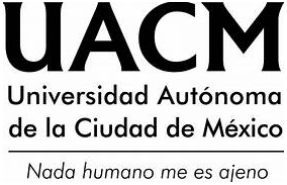The pesformative dimension of anti-AIDS events in Mexico City
DOI:
https://doi.org/10.29092/uacm.v9i19.397Keywords:
Performance, candleligth, hiv-aids gay identity, deathAbstract
This article analyzes the performative dimension of the activists of movement against aids during the Caminata Nocturna Silenciosa en Conmemoración de los Muertos por Sida at the end of nineties in Mexico City. The study found that those events constitute political and cultural manifestations that appeal to performance and theatricality to do more effective the requests; it have symbolic functions in the recognition of the gay and seropositive identities, and in the process of mourning, education and prevention; it are strategies to defend the civil rights and to change the stigma of a disease socially condemned; and, although, it have a global nature, locally include elements from the national identity and popular culture.
Downloads
References
Alcázar, J. (2002), “La antropología inversa de un performancero postmexicano”, en Guillermo Gómez Peña, El mexterminator, México: Océano, pp. 15-32.
Altman, D. (2006), Sexo global, México: Océano.
Comité Coordinador (1994), No dejes que el amor muera por sida. VII Caminata Nocturna Silenciosa, 27 de mayo, Ciudad de México (tríptico).
______ (1998), Aún con sida, continúa la vida. XI Caminata Nocturna Silenciosa, 29 de mayo, Ciudad de México (tríptico).
Cruces, F. (1998), “El ritual de la protesta en las marchas urbanas”, en Cultura y comunicación en la Ciudad de México. Segunda parte La ciudad y los ciudadanos imaginados por los medios, México: UAMIztapalapa/ Grijalbo, pp. 27-83.
Giménez, G. (1997), “Materiales para una teoría de las identidades sociales”, en Frontera Norte, vol. 9, núm. 18, México, pp. 9-28.
Hernández, P. (2002), No nacimos ni nos hicimos, sólo lo decidimos. La construcción de la identidad gay en el Grupo Unigay y su relación con el Movimiento Lésbico, Gay, Bisexual y Transgenérico de la Ciudad de México, Tesis de Maestría en Antropología Social, México: ENAH.
______ (2004), “Los estudios sobre diversidad sexual en el PUEG”, en Gloria Careaga y Salvador Cruz (comps.), Sexualidades diversas: aproximaciones para su análisis, México: PUEG-UNAM/MiguelÁngel Porrúa/Cámara de Diputados, pp. 21-33.
______ (2005), “El activismo del grupo Unigay en eventos pro diversidad sexual y antisida en los noventa en la Ciudad de México”, en Mirada Antropológica, núm. 3, Puebla: Benemérita Universidad Autónoma de Puebla, 105-142.
Jones, J. (2000), “Pink Triangle”, en George E. Haggerty (comp.), The Encyclopedia of Lesbian and Gay Histories and Cultures, vol. II (“Gay Histories and Cultures: An Encyclopedia”), Nueva York y Londres: Taylor & Francis Group, pp. 691-692.
Núñez, G. (2009), Vidas vulnerables. Hombres indígenas, diversidad sexual y VIH-sida, México: CIAD/EDAMEX.
Pineda, J. (1992), “La crisis y el movimiento homosexual”, en Enrique de la Garza Toledo (coord.), Crisis y sujetos sociales en México, volumen segundo, México: Centro de Investigaciones Interdisciplinarias en Humanidades-UNAM/Miguel Ángel Porrúa, pp. 529-550.
Prieto, A. (1996), “La actuación de la identidad a través del performance chicano gay”, en Debate Feminista, vol. 13, México, pp. 285-315.
______ (1997), “Identidades incorporadas; el manejo del estigma en el performance art de Luis Alfaro”, en Chasqui. Revista de Literatura Latinoamericana, vol. 26, núm. 2, Estados Unidos: Arizona State University, pp. 72-83.
______ (2000), “Chicano and Latino Gay Cultures”, en George E. Haggerty (comp.), op. cit, pp. 181-183.
______ (2005), “Los estudios del performance: una propuesta de simulacro crítico”, en Citru.doc. Cuadernos de investigación teatral, núm. 1, noviembre, México: Centro Nacional de Investigación Teatral Rodolfo Usigli (CITRU), CONACULTA, pp. 52-61.
______ (2009), “¡Lucha libre! Actuaciones de teatralidad y performance”, en Domingo Adame (comp.), Actualidad de las artes escénicas: perspectiva latinoamericana, México: Universidad Veracruzana, pp. 116-143.
Ríos, G. (1997), “Calaveras en el arte mexicano”, en Guadalupe Ríos, Edelmira Ramírez y Marcela Suárez, Día de Muertos, México: UAM, pp. 47-58.
Román, D. (1998), Acts of Intervention: Performance, Gay Culture, and AIDS, Bloomington: Indiana University Press.
______ (2000), “AIDS Performance”, en George E. Haggerty (comp.), op. cit., pp. 37-38.
Sánchez, Á. y López, Á. (2000), “Visión geográfica de los lugares gay de la Ciudad de México”, en Cuicuilco, vol. 7, núm. 18, México: ENAH, pp. 271-286.
Sánchez, C. (2009), “Sida ataca a veinteañeros”, México: El Gráfico, 17 de agosto de 2009, p. 11.
Shernoff, M. (2006), Without Condoms. Unprotected Sex, Gay Men & Barebacking, Nueva York: Routledge.
Sontag, S. (1989), AIDS and Its Metaphors, Nueva York: Farrar, Straus y Giroux.
Subcomandante Insurgente Marcos (2003), “Mensaje para la Marcha del Orgullo Lésbico-Gay, 26 de junio de 1999”, en EZLN. Documentos y comunicados, México: Era, pp. 323-325.
Vill amil, J. (2002), “Presunto grupo católico de ultraderecha agredió el condomóvil en Querétaro”, México: La Jornada, 5 de marzo, p. 43.
Weeks, J. (1995), “Valores sexuales en la era del sida”, en Debate Feminista, vol. 11, México, pp. 157-182.
Published
Issue
Section
License
This Journal is licensed under Creative Commons Mexico 2.5. It is allowed to reproduce and disseminate the contents of the Journal for educational or research purposes, not for profit, as long as they are not mutilated and cite the source (Andamios, Revista de Investigación Social) and the author.
The copyright of the articles published in Andamios, Revista de Investigación Social are transferred by the author(s) to Universidad Autónoma de la Ciudad de México when the originals have been accepted, so that they are published and distributed both in the printed and electronic versions of the Journal. However, as established by law, the author(s) retains their moral rights. The author(s) will receive a form of assignment of copyright that they must to sign when their original has been accepted. In the case of collective articles, the signature of one of the authors will suffice, provided that the latter has obtained the consent of the others.
Authors may use the material of their article in other works or books published by themselves, with the condition of quoting Andamios as the original source of the texts.
The articles contained in this publication are the responsibility of their authors and do not compromise the official position of Andamios, Revista de Investigación Social of the Universidad Autónoma de la Ciudad de México.


